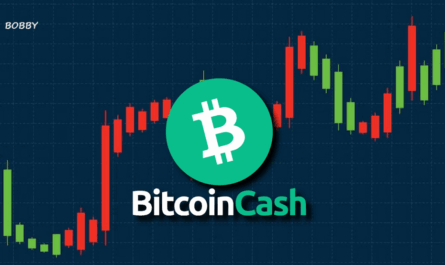Bitcoin has once again proven its resilience by gaining nearly 60% of the entire cryptocurrency market valuation, marking one of the strongest performances seen since April 2021. This renewed surge has reignited discussions among analysts, traders, and institutional investors about the future of digital assets and Bitcoin’s enduring leadership.
For many in the financial sector, this milestone signals not just another bullish phase but also a shift in the cryptocurrency ecosystem — one where Bitcoin’s maturity and institutional acceptance are reshaping the broader market narrative.
A Record-Breaking Rise in Bitcoin’s Market Domination
Analysts from Wall Street to Asia are watching Bitcoin’s remarkable comeback with renewed enthusiasm. After hitting a market dominance low of 38.84% in September 2022, Bitcoin has rebounded sharply, now commanding around 60% of total crypto market capitalization.
At the time of writing, Bitcoin trades at approximately $67,130 on major exchanges like Coinbase, reflecting a sustained rally driven by both retail and institutional investors.
What’s more impressive is Bitcoin’s ability to maintain its upward momentum despite recent controversies — including the Wall Street Journal’s investigation into Tether, the world’s largest stablecoin issuer. While past market turmoil would have triggered panic selling, Bitcoin’s steadiness today reflects a new level of investor confidence and market maturity.
Institutional Adoption Driving Bitcoin’s Strength
One of the biggest factors behind Bitcoin’s dominance is the wave of institutional adoption, largely fueled by the approval of Bitcoin spot Exchange-Traded Funds (ETFs). These ETFs, offered by some of the world’s most established financial giants — including BlackRock, Fidelity, and Franklin Templeton — have legitimized Bitcoin as a mainstream financial asset.
Through ETFs, institutional investors can now gain exposure to Bitcoin without directly managing wallets or private keys, removing one of the biggest barriers to entry for traditional finance players.
This move has dramatically increased capital inflows into Bitcoin, positioning it as a digital safe haven comparable to gold. According to analysts, large asset managers are continuing to acquire significant Bitcoin holdings, signaling strong long-term confidence in its value.
The introduction of ETFs has also enhanced liquidity, transparency, and accessibility, making Bitcoin more appealing to pension funds, hedge funds, and even corporate treasuries seeking diversification.
Reduced Volatility and Growing Market Maturity
Another sign of Bitcoin’s evolution is its decreasing volatility compared to altcoins. Historically, Bitcoin and other cryptocurrencies have been associated with wild price swings. However, in recent months, Bitcoin has shown relative price stability, especially when compared to Ethereum, Solana, and other major altcoins.
This lower volatility is increasingly attracting risk-conscious investors looking for stability in the crypto space. For institutions and high-net-worth individuals, Bitcoin now represents a “store of value” rather than a speculative gamble.
As a result, capital is flowing primarily into Bitcoin, while smaller digital assets — once the beneficiaries of speculative enthusiasm — are seeing slower growth.
Expert Insights: Bitcoin’s Rising Influence in the Crypto Ecosystem
Experts from QCP Capital, a Singapore-based digital asset trading firm, believe Bitcoin’s dominance is not a temporary phenomenon. They predict that Bitcoin’s market share will continue to expand as investors prioritize quality and reliability over short-term speculation.
According to their analysis, the ongoing market cycle is fundamentally different from previous ones. Unlike in 2017 or 2021 — when capital quickly rotated from Bitcoin into Ethereum and various altcoins — the current phase reflects a “flight to quality.” Investors are now concentrating their capital on the most trusted and established digital asset: Bitcoin.
James Van Straten, a well-known crypto analyst, echoed this sentiment. He noted the “conspicuous lack of capital rotation” into Ethereum, which has traditionally been considered the number-two crypto asset. This unusual trend suggests a deeper structural transformation within the market — one that emphasizes security, utility, and institutional confidence over speculative hype.
The Broader Implications: A New Era for Crypto Investment
Bitcoin’s strengthening dominance could have far-reaching consequences for the broader cryptocurrency ecosystem.
For one, it highlights a shift toward institutionalization, where large financial entities drive the market narrative rather than individual traders. This change introduces greater legitimacy and long-term stability but also brings new expectations for regulation, compliance, and transparency.
Additionally, Bitcoin’s expanding influence might reshape how investors perceive altcoins and decentralized finance (DeFi) projects. As more capital concentrates in Bitcoin, smaller tokens may face reduced liquidity and slower growth unless they offer clear utility or innovation.
Still, this isn’t necessarily bad news for the crypto industry. A market anchored by a strong and stable Bitcoin could provide a foundation for sustainable growth, reducing the extreme volatility that has historically discouraged institutional participation.
Bitcoin as a Safe Haven in an Uncertain Economy
The renewed investor interest in Bitcoin also reflects broader macroeconomic concerns. With global inflation pressures, currency devaluation, and geopolitical tensions on the rise, investors are increasingly searching for assets that preserve value beyond traditional financial systems.
Bitcoin — with its fixed supply of 21 million coins and decentralized structure — has once again proven its appeal as a hedge against economic instability.
Its resilience during market turbulence has strengthened its reputation as “digital gold.” While critics argue that Bitcoin still depends on speculative interest, the consistent inflow of institutional capital suggests that it’s evolving into a legitimate global asset class rather than a passing trend.
The Future Outlook: Is Bitcoin Entering a New Golden Age?
With ETFs approved, institutional adoption rising, and volatility declining, Bitcoin may be entering what analysts describe as a “new golden age.”
Its growing role as a benchmark asset sets the stage for further integration into the global financial system. Some experts even predict that within the next few years, Bitcoin could become a standard portfolio component for major funds and endowments, much like gold or government bonds.
Meanwhile, for retail investors, Bitcoin’s current stability and accessibility through ETFs could make it a more practical and trustworthy entry point into the world of digital assets.
Conclusion: Bitcoin’s Dominance Marks a Turning Point in Crypto History
Bitcoin’s 60% market dominance isn’t just a number — it represents a fundamental transformation in how digital assets are perceived and valued.
The combination of institutional confidence, reduced volatility, and growing regulatory clarity is pushing Bitcoin toward unprecedented legitimacy. This momentum could permanently reshape the cryptocurrency landscape, solidifying Bitcoin’s place not only as the most valuable digital asset but also as a cornerstone of the global financial system.
As the crypto market continues to evolve, one truth has become clear: Bitcoin remains the undisputed leader — and its reign shows no signs of ending anytime soon.




